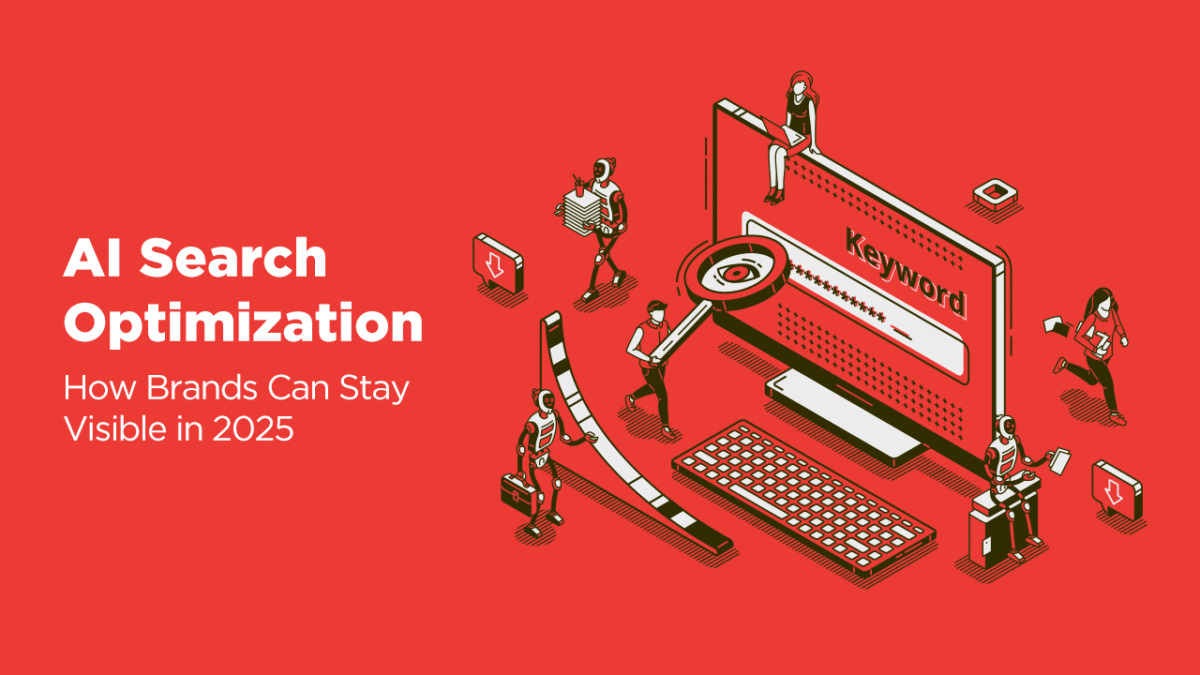
Your brand might be everywhere, on Google, Instagram, and affiliate blogs, but if AI can’t see you, customers won’t either. That’s the new reality of search. The shift toward conversational, generative search is already rewriting the rules of online visibility from ChatGPT to Google’s Search Generative Experience (SGE) and Microsoft Copilot. For brands, that means traditional SEO isn’t enough anymore.
AI search doesn’t just pull links, it summarizes, recommends, and often skips direct site visits altogether. In fact, by 2028, brands’ organic search traffic will decrease by 50% or more as consumers embrace generative AI-powered search, according to a Gartner report.
The question isn’t whether your brand should adapt. It’s how fast. This blog explores the most effective strategies for AI visibility enhancement, emerging brand visibility factors, and AI optimization best practices for visibility products. Let’s get started!
AI Search Optimization is the process of customizing your content, structure, and authority to perform well in AI-powered search environments, especially those driven by large language models (LLMs) like ChatGPT, Google’s SGE, and Microsoft Copilot. These tools don’t simply rank web pages. They extract, summarize, and synthesize insights to generate full answers, often without any clicks. AI search optimization focuses on:
Think of it like this: traditional SEO helps people find your site. AI SEO helps AI find and feature your content in its answer, often with no link involved. And for brands looking to boost product discovery, this is the new battleground.
If AI is now answering your audience’s questions, you need to make sure your brand is part of those answers. That’s where brand visibility optimization comes in.
Traditional SEO relied on backlinks, keyword density, and domain age. But AI-powered discovery relies on context, credibility, and semantic value.

Here’s what’s changing:
To stay visible, brands must optimize not just for users, but for AI systems, ensuring your product information, content, and partner ecosystem all signal clarity and value.
So, how does AI decide which brands and products to show in its answers? It’s no longer a pure numbers game. Instead, AI uses a blend of relevance, credibility, and consistency to determine which brand deserves to be surfaced.
Here are the top brand visibility factors that matter most in 2025:
AI models look for brands that demonstrate deep understanding of their niche. It’s not enough to have one blog post about a trending keyword. Your brand needs to consistently cover related topics, FAQs, and user concerns in a meaningful way.
For example, if you sell fitness supplements, having content on muscle gain, ingredient breakdowns, safe usage, and common fitness goals builds semantic depth. This signals to AI that you’re not just selling, you understand the category.
AI doesn’t scroll. It parses. That means your content should be structured in a way that machines can understand. Use proper schema markup for product pages (like price, availability, and reviews), add internal linking between related content, and organize product attributes clearly.
A skincare product page that lists “suitable for sensitive skin,” “contains hyaluronic acid,” and “fragrance-free” as structured attributes is far more likely to be recommended in AI-generated results than one with unstructured product blurbs.
AI favors brands that are consistent in their message and coverage across all digital touchpoints, not just their own website.
If your brand regularly appears in affiliate reviews, product comparisons, user forums, and social media conversations, and says the same thing in all places, you build a trustworthy web of relevance.
That means you should:
Third-party validation matters. AI tools look at what others are saying about your brand, especially in user-generated content like blog reviews, forums, Reddit threads, and affiliate lists.
When your product is consistently featured in “Top 10” roundups or side-by-side comparisons, it signals trust even better if those reviews come from diverse, credible sources like niche experts, influencers, and performance-driven affiliates.
These brand visibility factors don’t work in isolation. The more aligned your efforts across your own channels, partner content, and affiliate ecosystems, the more AI systems will recognize and reward your brand presence.
If you’re selling products online, your product pages aren’t just for human shoppers anymore they’re for machines too. AI tools compare, summarize, and rank products based on how well their information is structured, described, and connected. These AI brand visibility optimization best practices for visibility products will help you make sure your offerings don’t just exist online, they stand out.

Every product should include structured data: price, stock status, size, ingredients, usage instructions, and more. AI tools use this data to create product tables and recommendation lists.
For example, if someone asks an AI, “What’s the best moisturizer for oily skin under ₹500?” AI will look for structured attributes like skin type suitability, price, and product reviews.
Rich schema = better inclusion in AI answers.
AI-generated responses are trained on content that reads naturally. Ditch the jargon and keyword stuffing. Write like you’re explaining the product to a friend.
Answer buyer questions like:
The more your descriptions mirror real search queries and needs, the easier it is for AI to pull your product into its recommendation sets.
AI tools don’t just want general claims. They prioritize specificity. Does your product use sustainable packaging? Is it clinically tested? Does it come with a no-questions-asked return policy? These details set your product apart and give AI a reason to recommend it over a generic competitor.
Pro tip: Use bullet points for clarity. Machines love it. So do humans.
Here’s a powerful truth: many AI models pull information directly from affiliate websites, comparison blogs, and listicles. That means being featured in high-quality affiliate content can directly impact your brand visibility factors.
These are the kinds of queries AI tools answer by scanning affiliate reviews and recommendation lists.
Improving visibility is only useful if you can do brand AI visibility benchmarking effectively. Traditional metrics like web traffic and SERP rankings don’t reflect how well your brand is performing in AI-powered environments. That’s where brand ai visibility benchmarking comes in.

Here’s what you should track:
AI-powered search doesn’t care about keyword stuffing or clever headlines. It’s trained to recommend content that’s useful, well-structured, and up to date. Here are a few simple, high-impact brand visibility optimization strategies to make sure your brand gets seen, and suggested.
These simple shifts help your content speak directly to AI, and keep your products visible, relevant, and recommended.
In the age of AI, affiliate marketing isn’t just about sales; it’s about visibility. Here’s why your affiliate network plays a much bigger role than you might think.
By working with trusted affiliate partners who create useful, well-structured content, your brand stays part of the conversation, even in search results you didn’t directly create.
AI is reshaping the way people look for products. Instead of ten blue links, they now see one trusted answer, and that answer is often shaped by structured content, clear messaging, and independent recommendations. To stay visible, your content must be structured, useful, and easy for AI systems to understand. That means clear product data, natural language, and consistent mentions across trusted sources like affiliate reviews and comparison blogs.
Search is no longer about ranking at the top; it’s about being selected as the most relevant. Brands that build depth, trust, and clarity across channels are the ones AI will highlight.
In an AI-driven world, visibility doesn’t come from being loud; it comes from being useful.